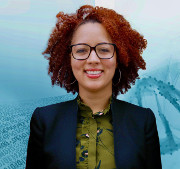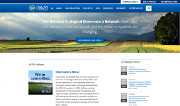
Increasing ATE Career Placement for Students with Autism Spectrum Disorder (ASD): Identification and Dissemination of Best Practices
www.stairwaytostem.org
According to the U.S. Center for Disease Control (CDC), the national prevalence of Autism Spectrum Disorder (ASD) increased by 119.4% from 1 in 150 (in 2000) to 1 in 68 (in 2010). The factors contributing to the increased prevalence of ASD include heightened public awareness, improved screening, changes in the diagnostic specification, and, notably, improved ability to recognize and diagnose higher-functioning individuals with ASD who may have been overlooked in the past. Evidence suggests that these individuals, sometimes referred to as having high-functioning ASD, may be the fastest growing sector of the autism population. The implications for institutions of higher education and for employers is far-reaching. In addition to improved diagnosis, the success of interventions and efforts to include students with ASD in mainstream activities has contributed to increased rates of college attendance. The number of students entering college with high-functioning autism spectrum disorders is expected to increase in coming years, and data reveal an enrollment rate of students with ASD at community colleges at more than twice that of four-year colleges.
This project will produce a series of video-based educational materials for the professional development of educators and employers. The overarching focus is to: 1) build awareness of academic and employer-based STEM programs that promote the college and workplace based success of individuals with ASD and, 2) to promote existing "Best Practices" to an expanded community of educational institutions, students with ASD and their families, and employers. The videos will showcase applied best practices across multiple STEM disciplines and specifically in technician preparation programs in advanced technological education. Pellet Productions will first perform an analysis of the current landscape of academic- and employer-based supports for individuals with ASD, and then produce a series of recruitment and professional development videos including: six student profiles, three ATE and STEM videos for families, and one ATE and ASD overview video for general audiences and a long form documentary-style best practices video that will form the basis for a professional development course to be offered via an online format. An e-Book will be produced to both accompany the course and serve as a stand-alone guide to best practice implementation. The primary audiences include: ATE faculty, student affairs personnel, corporate sector human resource personnel and supervisors, and students with ASD and their families to help guide their college and career decision process.







